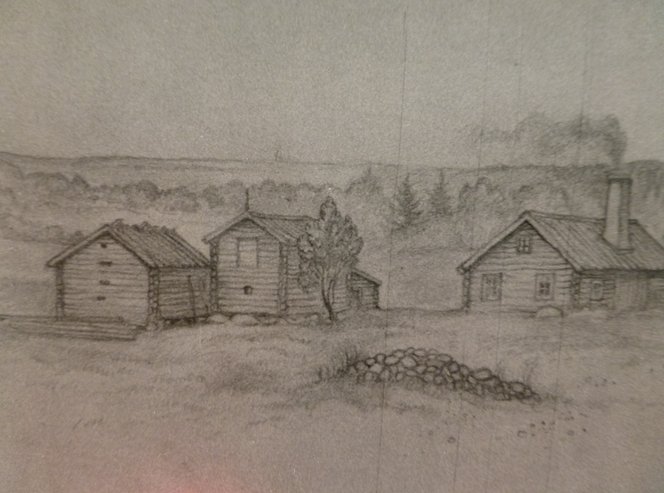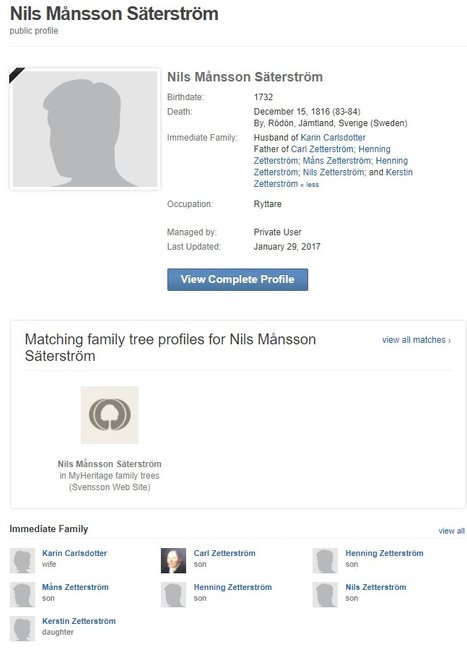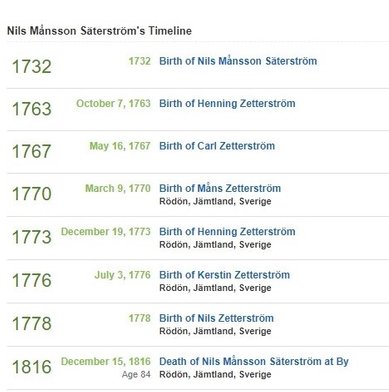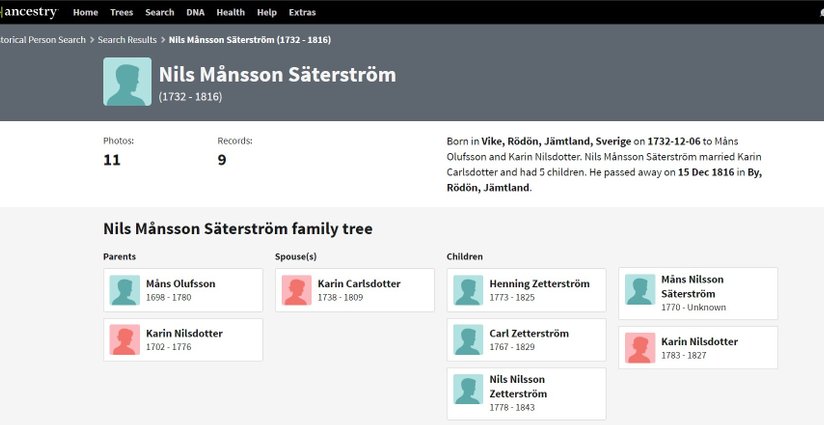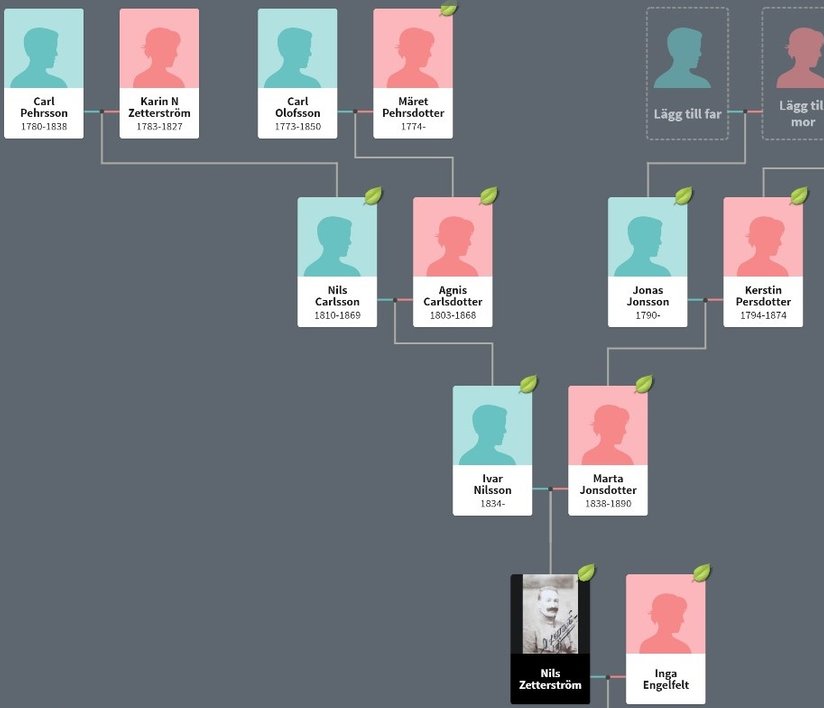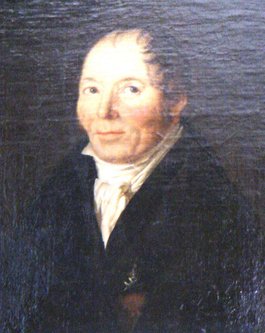Zetterström Family Portal
From YZ email 28/12/2013:
I found a small book of 64 pages yesterday and read it with quite some interest. Maybe I already wrote something about the late Carl Z but I’m not sure that was from this book as there exist other documents as well on Carl Z.
The attached photo shows the home of Nils Säterström (Ingrid, your spelling is right!) and his wife Karin. They married on 19th September 1762 (?), she was 17 years younger than Nils. The home built by Nils was in a small village “By” (By means village in Swedish and the “y” must be pronounced like a French “u” or maybe like “union” or “universal”?). Nils was a soldier with a horse, a “ryttare” in Swedish. The land was put to his use by the head of the church, Tideman and Nils worked on his property when not occupied with his own things. Nils took his name from the village “Säter” where his army belongings were stored. Karin, the mother of Karin was a widow from a soldier and came to work at the household of the Tideman family. She worked good and her daughter was raised together with the children of the Tideman family. As the small farming activity could not keep the family going Nils also started some commercial activities taking with him products from Jämtland to the markets in Uppsala, Stockholm and Trondheim. On the return to Jämtland he took products with him which he sold in his small shop at By. Quite some trips I believe considering that Stockholm is more than 600 kms (some 400+ miles) from Östersund, Uppsala 80 kms shorter and Trondheim some 200 kms away (but you have to cross the mountains!) everything on horseback!
Nils and Karin got over time five children: Carl (born 1767), Måns, Henning, Nils and the daughter Karin (third Karin in line!). Here is the interesting question if this Karin married with someone in our family and this is our connection to the Säterström family? Carl had as far as we know no children. Who knows? Maybe Kersti knows about this or has an idea? Carl and Måns showed extraordinary intellectual capabilities and were headed to leave the simple life in the agricultural field. Måns started a carrier in the military but failed and ended up as an alcoholic while Carl became a famous person at the University at Uppsala. Somewhere along his carrier Carl changed the spelling of his name to Carl Zetterström and that explains our present spelling. The story goes that our grandfather, Nils “the cheese king”, found it very interesting with the famous Carl Z so he simply took the name Zetterström. He was at the time “Ivarsson” and as you can see from this mail our only possible connection is through the daughter of Nils and Karin Säterström, Karin the sister to Carl Z! Do you still follow me? If not tell me!
The Carl Z story is quite interesting, a true “class voyage” coming from simple but correct conditions in the far away Jämtland to become a Medical Doctor and later a Professor of Medicine in the most prestigious University in Sweden. By the time there were only three universities in Sweden; Uppsala north of Stockholm, Lund in the south and originally a Danish University and Åbo (in Finnish Turku) lost in 1809 to Russia when Sweden lost the whole eastern part of the country to the Tsarist Russia, the greatest catastrophe in the history of Sweden. This must have been a major subject on Carls and his colleagues academic discussions from that year until his death in 1829. And they must have had many ideas on how to reconquer the lost land. According to the book I found Carl Z met with many of the nationalists that raised after the loss! But as you know Sweden took another road with the Bernadotte Dynasty, the Union with Norway!
In short the contents of the book. CZ entered Frösö Trivialskola (the school at Frösön where the pupils also lived under poor conditions), then he came to the Gymansium at Härnösand (happen to be my birth town!), by the time the most important town in Norrland (the northern part/region of Sweden) and then finally to Uppsala where he took his diplomas and later became a “Professor” (that’s the highest rank you can reach at the University). He never married although there were one or two possible young ladies available but he seems not able to make up his mind in time so the opportunities disappeared! So, he lived by himself. However, he was not a loner, he had an inner circle of very good friends, all from Jämtland. He had a large contact net and took part of many academic parties with the elite of intellectuals at Uppsala and possibly at Stockholm, many famous writers were amongst these contacts, one had been at the court of King Gustaf III (assassinated in 1792).
CZ collected books in whole his life and he had by the end some 12000 volumes, the whole library was donated to Jämtland and formed the first library at Jämtland. There still remains some 8000 volymes and these books are nowadays stored at the County Library at Östersund. Originally the books were stored at a library building at Frösön, a building which still exist and is “Zetterströmska Biblioteket”. I have no idea how the building is used in these days. CZ’s tomb is at the church at Vaxsala outside of Uppsala.
I hope this had some interest for you. The book is in my hands but I have no practical idea how to copy it if anyone is interested. I sent a second mail today after talking to Nisse, the Calendar 2014 of the Jamtli Museum at Östersund contains the role of our Grandfather (Nils Z, “the Cheese King”) at the manifestation for the King and for the Army in 1914 (had nothing to do with WW1) where Nils Z was the Head of the Delegation from Jämtland, 400 farmers of something like that.
From: Karin Jackson [mailto:kzjackson40@gmail.com]
Sent: mercredi 8 janvier 2014 00:08
"... the earliest Nils that we know of and Karin Saterstrom married in 1762? and had five kids, four boys, one of which was the Uppsala professor Carl Z., and one girl Karin, named after her mother. My understanding is that she married someone (Ivarsson??) and eventually the line got to Farfar Nils Ivarsson (who was born in 1875, I believe), who reclaimed the Saterstrom/Zetterstrom name for the family. Our direct ancestor has to be Karin, because if it were any of the brothers the name would have been Saterstrom all along. Obviously the names Nils, Carl, and Karin recur through the generations.
Daniel, Nisse (nickname for Nils) is our cousin, son of Gosta, youngest brother of Olle, Ivar (Y's dad), Carl, and sister Ingrid. He is a bit younger than I am. His wife is Kersti, his sister was Gudren who died a couple years after we saw them in Sweden in '02. "
Hope this adds/clarifies the details.
Karin
Connection to the name Zetterström?
Two conflicting sources:
Source Geni.com
Nils Månsson Säterström: husband of Karin Carlsdotter
Kerstin Zetterström (born July 3rd 1776)
Sister of Carl (Carl Zetterström 1767-1829), Måns, Henning and Nils.
Source Ancestry.com
Karin Nilsdotter Zetterström (1783-1827)
Sister of Carl (Carl Zetterström 1767-1829), Måns, Henning and Nils.
Carl Zetterström 1767-1829
Brother of Karin Nilsdotter / Kerstin Zetterström (?)
From Wikipedia link
(Translated by Google)
Carl Zetterström, born May 16th 1767 on Rödön,
died November 9th 1829 in Uppsala,
buried at Vaksala graveyard,
was professor in medicin at the University of Uppsala,
and bibliophile and donor.
General
Zetterström was born in the soldier's croft Bytorpet in By (Bye) on Rödön in Jämtland,
his parents were the rider at Jämtland's cavalry company Nils Säterström
and his wife Karin Carlsdotter.
Zetterström started in Frösö trivial school at the age of 12,
and then went to Härnösands gymnasium.
As a student in Uppsala in 1789, Zetterström got an informant position with the renowned chemist Henrik Gahn the elder in Stockholm and developed in his company his interest in the natural sciences and medical sciences. On his return to Uppsala, he graduated in 1796 with a bachelor's degree in medicine and the following year became a medical licentiate and doctor of medicine. In 1802 he was appointed assistant professor of theoretical and practical medicine at Uppsala University and in 1813 received the title of professor. After another seven years, he was promoted to professor of medicine, a position he held until his death.
He was an honorary member of the Collegium medicum in Stockholm in 1813, a member of the Royal Swedish Academy of Sciences in 1815, with several scientific societies, both in Sweden and other countries.
Already during his time as an informant in Gahn's home he had learned to realize the value of vaccination, and in 1815 he was awarded the silver medal of honor for showing zeal for the promotion of vaccination. This also gave rise to his work Initia historiæ vaccinationis in Suecia, published in 1816-1821, which contains twenty dissertations on the subject. Several other dissertations were also published by him, including a memorial speech written by him on Henrik Gahn, who died in 1816. Zetterström also made himself known as a supporter of the so-called "priest medicine", where the idea was to provide basic medical care in the countryside by giving all priests simpler knowledge of medicine.
The Zetterström Library
Zetterström was a skilled doctor and university teacher, but had almost an even greater reputation as a book connoisseur. He collected books during his time in Uppsala, the most valuable he kept in a corner of the cathedral to avoid the danger of fire in the wooden houses in the city.
At his death, he left behind an extremely rich library of valuable works, which he donated to his homeland and which became the basis for Jämtland's library.
The Zetterström library on Frösön was built in 1830, in accordance with Carl Zetterström's will, in which he demanded a stone house due to the danger of fire. The library building was built on the pattern of a Roman podium temple. Frösö trivial school, founded in 1679, was previously located next to the place. In December 1816, His Majesty the King took the decision to establish Jämtland's library, which thus became Sweden's oldest county library.
The Great Book Transport
In the spring and winter of 1833, a caravan with horse-drawn carriages was arranged from Uppsala to Frösön. There were 12,000 volumes loaded in 17 bookcases. There were 700 volumes in each thigh. The carrier was the farmer Daniel Månsson from the village of Förberg in Revsund parish. He was told: "You Daniel, shut up about the words, seal the books!".
The transport took two weeks, and on page 64 of Carl-Göran Ekerwald's book Jämtarnas land, he writes: "... this slow procession - Caesar and Cicero, Cornelius Nepos and Vergil ...". Further: "... deep down slides between snow-laden spruces and out on icy lakes. Should any sled have overturned and the heavy book legs broken ...", but no thigh broke but Daniel Månsson could deliver all the books outside the entrance to the library on Frösön on March 18, 1833.
Frösö trivial school was on site at Stocke 1679–1846. In 1847, Trivialskolan was moved to Läroverkshuset in Östersund. However, the Zetterström library remained in Stocke. However, some books were moved to the new school library in Östersund (now: Wargentinsskolan).
In 1912, the Zetterström book collection was moved from Stocke to the then new county library in Östersund (today Ahlbergshallen), and in 1958 the books were moved into today's modern library.
